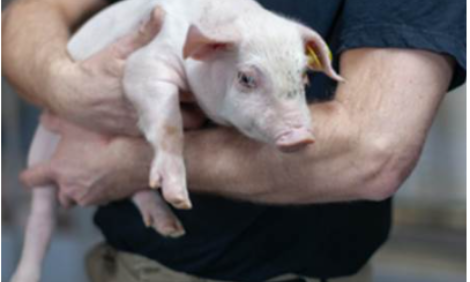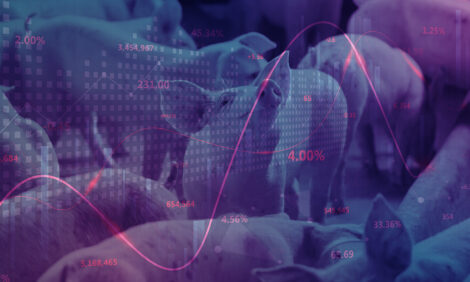



EU Changes its Approach to Pig Welfare
The future EU strategy on animal welfare in the pig meat sector needs to be based on a global multi-stakeholder approach, writes ThePigSite Editor in Chief, Chris Harris.Speaking at the recent World Pork Conference in Bonn, Germany, Dr Andrea Gavinelli, head of the unit on animal welfare at DG Health and Consumers at the European Commission, said that animal welfare policies have to be both cost-efficient and economically sustainable, as well as being market driven and transparent.
He said that the policies that are being put in place in the EU are governed by the treaty that defines animals as sentient beings. Because of this, there has been animal welfare legislation dating back 30 years.
However, now welfare standards are being based on scientific authority.
He said that there is legislation covering the welfare of animals on the farm, during transport and at slaughter and the European Food Safety Authority recommendations cover all the scientific aspects related to the welfare of pigs.
Dr Gavinelli said that as farming technology improves so it is becoming integrated into welfare standards particularly covering health, environment and sustainability.
He added that the current trends in the global economy and in the EU market are having a strong effect on the management of welfare of animals in the pig sector.
The new governance model for welfare standards involves innovative policy making driven by science, economics, the internal market and multi-cultural aspects, responding to market-driven standards.
He said this has always been the way in the past but now welfare policy is also driven by ethics, the duty of care and sustainability.
”Sustainability is more and more becoming top of the priorities for the European consumer,” said Dr Gavinelli.
He said that the new directive on welfare at slaughter aims for welfare at killing to be closely allied to the hygiene package approach.
He said it has to be prescriptive and flexible in its methods and had to allow for the rapid integration of any new science.
The new directive requires certificates of competence and training and the possibility to adapt standards quickly based on scientific evolution.
To achieve this, the European Commission had to stimulate policies that focused on facilitating the integration of learning mechanisms on animal welfare.
At the same time, the authorities had to be aware that the initiatives had to not only to answer the needs of the EU but also the demands consumers would have for similar practices in countries outside Europe and the EU-27.
He said the directive saw the need for more technical provisions and stronger enforcement tools as well as being more transparent.
He said there will be increase responsibilities for operators and this will include the need for an animal welfare officer.
Dr Gavinelli added that the EU requires equivalent standards to those in the EU with reference to the World Organisation for Animal Health (OIE) standards.
To ensure this occurs in third countries, the EU requires a certificate showing equivalency.
“There is equivalency for every single piece of meat that enters the EU,” he said.
By 2013, he said, the EU will be introducing new standards to pigs in terms of group housing for pigs and the provision of enrichment material. There will also be new regulations requiring the avoidance of routine tail docking, all contained in the new animal welfare on farms directive.
“This will require investment and changes in management and measures to avoid distortion of competition in the internal market,” he said.
However, he added that all these new measures are being made more difficult for producers by the increases in feed costs and the current economic situation.
He said that the EU will be monitoring the way the poultry sector implements the regulations on enriched cages for laying hens, to learn how the new ban of stalls and tethers and the need for loose housing will be introduced.
Dr Gavinelli said that between now and the implementation, the Commission will be monitoring the countries that are ready to introduce the rule and those that are not to minimise the potential for competitive disadvantages.
Further measures on welfare of pigs to be introduced by 2018 will include a ban on the surgical castration of pigs.
He said that this would be a voluntary agreement, but by January next year, there has been agreement to introduce anaesthetics during castration.
“However, castration will not be banned. You cannot change the market trend,” he said.
He said there has to be a multi-stakeholder approach to ending castration and this will require support from the EU to develop the tools to achieve it.
He said the industry will have to develop reference methods to detect boar taint and there will have to be studies on consumer acceptance of the meat and the methods and the economics of developing a new approach.
“To achieve this, we need good communication,” he said.
He added that the EU also needs to reinforce the existing tools it has to improve internal cooperation, communication and education, enforcement and research.
He said the EU needs a common methodology to address animal welfare.
“There will be a market driven approach to animal welfare, but as well as this market driven approach you have to provide the tools to achieve good animal welfare, and for this you need benchmarking,” Dr Gavinelli concluded.
October 2011








